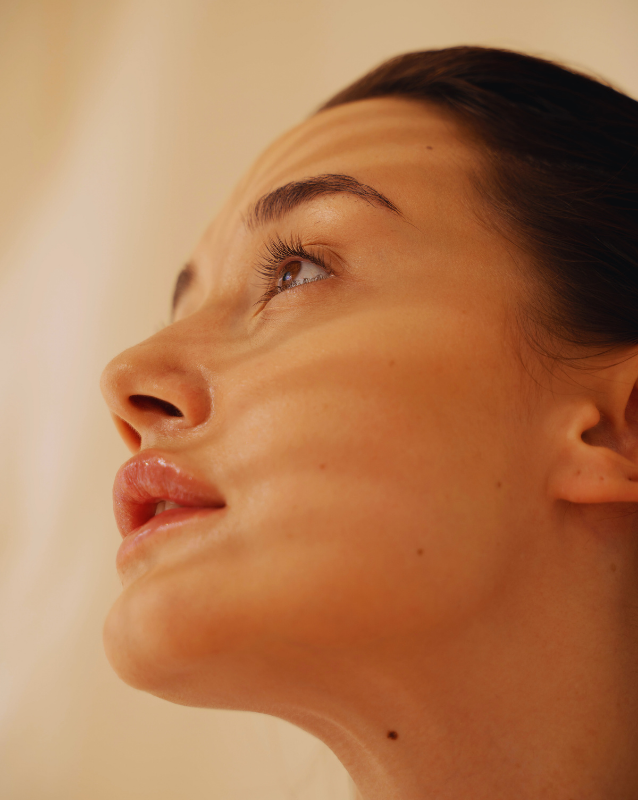Get Skin Tips, Product Drops & Exclusive Offers
Using Our Tan Accelerators
To achieve a deep, even tan and make the most of your accelerator, follow these steps:
Step 1: Exfoliate (24 hours before)
Use a gentle scrub or exfoliating mitt to remove dead skin cells. This creates a smooth surface for the tan to develop evenly and helps prolong results.
Step 2: Moisturise Dry Areas
Apply a light, oil-free moisturiser to dry areas such as elbows, knees, and ankles. This prevents uneven absorption. Avoid heavy lotions on the rest of the body before application.
Step 3: Apply Tan Accelerator
Apply The Tan Club evenly to clean, dry skin before sun exposure or sunbed use. The formula is designed to support natural melanin production, encouraging a faster, deeper tan while nourishing the skin.
Important:
This product does not contain SPF. If tanning outdoors, always apply a suitable SPF over the top to protect your skin from UV damage.
Step 4: Stay Hydrated and Maintain
Drink plenty of water to keep your skin hydrated from within. After tanning, use a moisturiser daily to maintain your glow and prolong your tan.
1. Supports Natural Melanin Production
• Acetyl Tyrosine and Hydrolyzed Vegetable Protein are included to help stimulate melanin production, which is the pigment your body naturally produces when exposed to UV light. This supports a faster, deeper tan.
• Melanin is also added directly, which may help enhance the appearance of color early on and support a more even-looking tan.
2. Deep Hydration and Skin Conditioning
• Ingredients like Aloe Vera, Shea Butter, Coconut Oil, Sunflower Oil, and Monoi de Tahiti Oil hydrate and soothe the skin. This helps reduce dryness or peeling that can occur with tanning, allowing your tan to last longer and look healthier.
• Dimethicone helps seal in moisture and adds a smooth, silky finish to the skin.
3. Antioxidant Protection
• Vitamin E, White Tea Extract, Ginseng Root Extract, and Kola Nut Extract are antioxidants that protect the skin from oxidative stress caused by UV exposure. This helps maintain skin health during tanning.
4. Immediate Color Enhancement
• Caramel color and cosmetic dyes (Red 40, Yellow 5, Black No. 2) provide an instant bronzing effect, giving your skin a warm glow even before melanin production increases.
Important Notes:
• This product does not contain sunscreen, so it won’t protect you from sunburn or UV damage. It’s designed to speed up tanning, not block UV.
In Summary:
This tan accelerator works by:
• Supporting natural melanin production (thanks to tyrosine)
• Adding instant color (via dyes and melanin)
• Nourishing and moisturizing your skin to help maintain your tan
If you’re planning to use this, make sure you combine it with UV protection to prevent skin damage, especially during prolonged sun exposure.
Melanin is a natural pigment found in your skin, hair, and eyes. It’s made by special skin cells called melanocytes, which are located in the bottom layer of the skin (epidermis). The main role of melanin is to protect your skin from UV radiation by absorbing harmful sunlight and reducing DNA damage.
There are three main types of melanin:
1. Eumelanin – Brown to black pigment (most common in skin and hair)
2. Pheomelanin – Red to yellow pigment (more common in redheads and lighter skin)
3. Neuromelanin – Found in the brain (not related to tanning or skin color)
How Does the Body Produce Melanin?
Your body produces melanin through a process called melanogenesis. Here’s how it works:
1. UV Exposure → triggers melanocytes to start making melanin.
2. Tyrosine (an amino acid) → is converted into melanin using enzymes (especially tyrosinase).
3. Melanin is transferred to skin cells to provide pigmentation and UV protection.
This is why your skin darkens when you tan—it’s a protective response.
Why Do Some People Produce More Melanin?
There are genetic differences in melanin production:
• People with darker skin naturally have more active melanocytes and produce more eumelanin. This gives their skin a higher level of natural protection from the sun.
• People with lighter skin have fewer melanocytes or ones that produce less melanin, making their skin more sensitive to UV exposure and prone to burning.
Other factors that affect melanin production:
• Hormones (e.g., during pregnancy)
• Age
• Sun exposure (more sunlight = more melanin over time)
• Certain medications or conditions (e.g., vitiligo affects melanin production)
Why Use a Tan Accelerator?
Tan accelerators support the natural melanin process by:
• Providing tyrosine or other precursors to help melanocytes produce more pigment
• Adding hydration and protection so your skin can tan more evenly and last longer
They don’t replace melanin, but they help your body make the most of what it already produces
We strongly recommend speaking with a dermatologist or sunbed specialist before beginning any tanning routine. Understanding your skin’s unique sensitivity and type is essential for safe exposure to natural sunlight or UV beds. A professional can help you create a plan that protects your skin while helping you achieve the best possible results.






